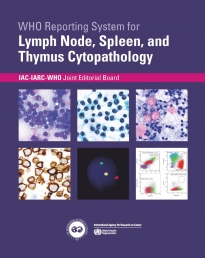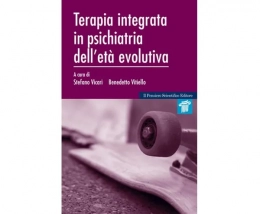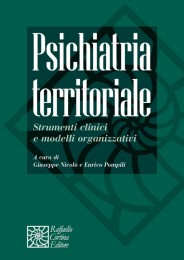Non ci sono recensioni
The WHO Reporting System for Lymph Node, Spleen, and Thymus Cytopathology is Volume 3 of this new series of reporting systems for cytopathology, which is a joint project of the International Academy of Cytology (IAC) and the International Agency for Research on Cancer (IARC), a specialized agency of the World Health Organization (WHO). The series includes a unique synthesis of the published evidence and the practice of cytopathology, and it is linked to the WHO Classification of Tumours series, now in its 5th edition.
Cytopathologists look at tumours slightly differently than other specialists do, and there is a need for specialized reporting systems based on the key diagnostic cytopathological features of tumours, presented in standardized reports, within a hierarchical system of diagnostic categories. These categories must also be linked to diagnostic management recommendations to improve communication with clinicians and support patient care. And it is essential that these reporting systems be truly international, to serve the needs of patients worldwide in many differently medically resourced settings.
What are the key features of this first edition of the series?
These volumes are an essential tool for standardizing diagnostic cytopathology practice worldwide and will serve as a vehicle for the translation of cytopathology research into practice. The key diagnostic cytopathological features listed for each tumour type under the diagnostic categories represent the first international consensus and are described in precise, uniform language. These diagnostic criteria are underpinned by available evidence that has been evaluated and debated by experts in the field. Lesion-specific sections include discussion of the differential diagnosis of the lesions’ cytopathological features that can be used worldwide, especially in low-resource settings, followed by a discussion of the current best-practice application of ancillary testing on cytopathology material.
- Prepared by about 40 authors and editors
- Contributors from around the world, reflecting an international expertise
- Hundreds of high-quality images
- More than 1000 references
Contents
List of abbreviations viii
Foreword ix
1 Introduction to the WHO Reporting System for Lymph
Node, Spleen, and Thymus Cytopathology 1
Background 2
The role of lymph node, spleen, and thymus
cytopathology 4
Integration of clinical, imaging, and key FNAB
cytopathological features with ancillary testing
in a diagnostic approach 6
Paediatric cytopathology 8
Lymphoid proliferations and lymphomas associated
with immune deficiency and dysregulation 12
Diagnostic categories and report structure 16
Risk of malignancy and diagnostic management
recommendations 19
2 Lymph node, spleen, and thymus cytopathology
techniques 21
Sampling methods
FNAB techniques and specimen management 22
Ultrasound guidance of FNAB 24
Rapid onsite evaluation 27
Cell preparation methods 28
Anciliary testing
Introduction: The role of ancillary testing 30
Flow cytometry 31
Immunocytochemistry 36
In situ hybridization 39
Molecular testing 43
3 Diagnostic category:
Insufficient/Inadequate/Non-diagnostic 47
Introduction 48
Definition 48
Discussion and background 49
Risk of malignancy and diagnostic management
recommendations 51
Sample reports 52
4 Diagnostic category: Benign 55
Introduction 56
Definition 56
Discussion and background 57
Risk of malignancy and diagnostic management
recommendations 59
Entities in the Benign category
Inflammatory/infectious processes
Acute inflammation 60
Granulomatous inflammation 62
Benign reactive lymphadenopathy
Follicular hyperplasia 65
Immunoblastic reactions 70
Prominent histiocytosis 72
Prominent plasmacytosis 75
Prominent necrosis 77
Splenic lesions
Vascular lesions 80
Sample reports 81
5 Diagnostic category: Atypical 85
Introduction 86
Definition 86
Discussion and background 87
Risk of malignancy and diagnostic management
recommendations 88
Sample reports 89
6 Diagnostic category: Suspicious for malignancy 93
Introduction 94
Definition 94
Discussion and background 95
Risk of malignancy and diagnostic management
recommendations 96
Sample reports 97
7 Diagnostic category: Malignant 99
Introduction 101
Definition 101
Discussion and background 102
Risk of malignancy and diagnostic management
recommendations 103
Entities in the Malignant category
Mixed lymphoid cell pattern
Follicular lymphoma 104
Marginal zone lymphoma 108
Nodal T follicular helper cell lymphoma,
angioimmunoblastic type 112
Predominantly small/intermediate cell pattern
Chronic lymphocytic leukaemia / small
lymphocytic lymphoma 115
Mantle cell lymphoma 118
Lymphoplasmacytic lymphoma 121
Plasma cell neoplasms 124
Mastocytosis 127
Predominantly intermediate/large/pleomorphic/blastic
cell pattern
Lymphoblastic lymphoma 130
Large B-cell lymphomas 132
Burkitt lymphoma 142
Anaplastic large cell lymphoma 146
Breast implant–associated anaplastic large cell
lymphoma 149
Primary effusion lymphoma 152
Peripheral T-cell lymphoma NOS 154
Myeloid sarcoma 158
Single very large atypical cell pattern
Classic Hodgkin lymphoma 160
Nodular lymphocyte-predominant Hodgkin
lymphoma 163
Lymphomatoid granulomatosis 165
T-cell/histiocyte–rich large B-cell lymphoma 166
Histiocytic/dendritic cell neoplasms
Langerhans cell histiocytosis 168
Interdigitating dendritic cell sarcoma 171
Histiocytic sarcoma 173
Stroma-derived neoplasms of lymphoid tissues
Follicular dendritic cell sarcoma 176
Metastases
Metastases from carcinomas 179
Metastases from melanoma 183
Metastases from sarcomas 185
Splenic neoplasms
Introduction 187
Splenic B-cell lymphoma 188
Hepatosplenic T-cell lymphoma 191
Angiosarcoma 194
Thymic neoplasms
Introduction 196
Thymomas 197
Thymic B-cell lymphomas 200
Thymic carcinomas 203
Sample reports 207
8 Diagnostic management recommendations for each
diagnostic category 213
Insufficient/Inadequate/Non-diagnostic 214
Benign 215
Atypical 216
Suspicious for malignancy 217
Malignant 218
Contributors 219
Declaration of interests 221
Sources 223
References 227
Subject index 245
Previous volumes in the series 253




